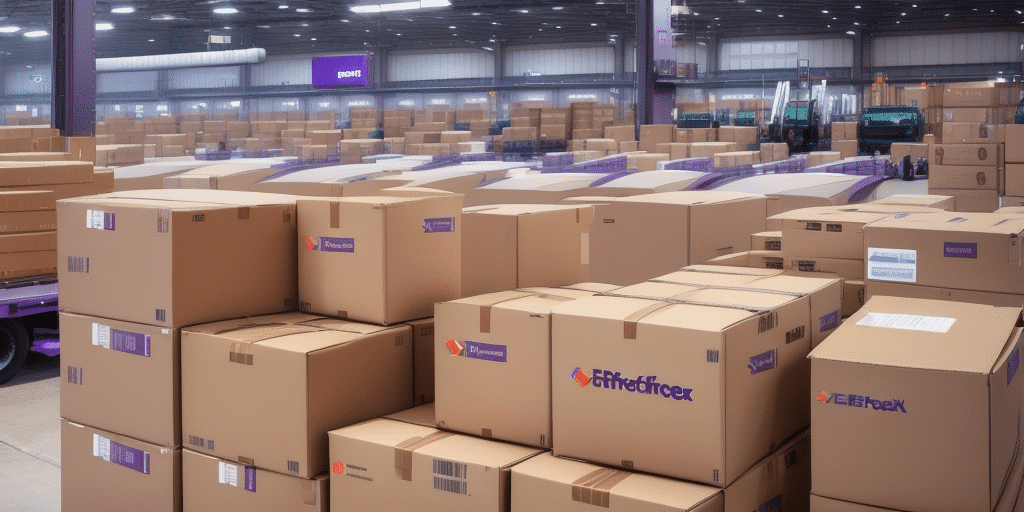How to Connect, Optimize, and Manage FedEx for Salesforce
If you are an e-commerce business, connecting and optimizing FedEx shipping with Salesforce can provide significant benefits. Not only can you streamline your shipping processes, but you can also enhance your customer experience by providing real-time tracking information about your shipments. In this article, we will provide you with a comprehensive guide on how to connect, optimize, and manage FedEx for Salesforce, covering all points in exhaustive detail.
Importance of Integrating FedEx with Salesforce
Integrating FedEx with Salesforce provides a unified experience for managing shipments and related customer data. Salesforce is a powerful CRM system that allows your business to capture, store, and manage customer information, while FedEx is a leading shipping carrier that offers reliable and cost-effective shipping solutions. By integrating both systems, your business can improve its shipping processes and gain better insights into your customers' shipping preferences and behaviors.
Furthermore, this integration streamlines the order fulfillment process. You can automatically generate shipping labels and track packages directly from Salesforce, eliminating manual data entry and reducing the risk of errors. This saves time and money, while improving the overall customer experience by providing real-time updates on the status of their shipments.
Benefits of Connecting FedEx with Salesforce
- Streamlined shipping processes: Easily create, manage, and track shipments within Salesforce, eliminating manual data entry and reducing errors.
- Better visibility into shipping data: Access real-time shipping data to make informed business decisions, such as optimizing shipping routes and minimizing costs.
- Improved customer experience: Provide customers with real-time shipping information and updates, enhancing their overall experience with your brand.
Additional benefits include:
- Automation of shipping processes: Save time and reduce errors by setting up rules and workflows that automatically trigger shipping actions based on criteria like order status or customer location.
- Insights into shipping performance: Analyze shipping data to identify trends and patterns, helping you optimize processes and reduce costs.
Step-by-Step Guide to Integrating FedEx with Salesforce
- Choose an integration solution: Select a FedEx-Salesforce integration solution available on the Salesforce AppExchange.
- Install the integration: Follow the installation instructions to add the integration to your Salesforce organization.
- Configure the integration: Adjust settings according to your business needs and preferences.
- Create a shipping record: In Salesforce, create a shipping record including details like shipment date, recipient address, and package dimensions.
- Select a FedEx service: Choose a FedEx service that meets your business needs, such as FedEx Ground or FedEx Express.
- Generate a shipping label: Click the Ship button to generate a label with a unique tracking number, which can be used to track the shipment's status.
By following these steps, you can integrate FedEx with Salesforce to streamline your shipping process, reduce errors, and enhance customer satisfaction.
Best Practices for Optimizing FedEx Integration in Salesforce
- Automate shipping processes: Use Salesforce Workflow and Process Builder to automate tasks, reducing manual data entry.
- Integrate with inventory management: Ensure your inventory system is integrated to maintain stock levels and fulfill orders efficiently.
- Select appropriate FedEx services: Choose services based on shipping speed and cost to meet customer expectations.
- Monitor and adjust shipping costs: Regularly review shipping expenses and adjust prices to stay competitive while maintaining profitability.
Additional best practices include:
- Use tracking and monitoring tools: Keep track of shipments to ensure timely delivery and address potential issues proactively.
- Regularly update shipping policies: Align shipping procedures with business goals and customer needs to stay competitive and enhance customer satisfaction.
Managing FedEx within Salesforce
- Employee training: Ensure your team is trained on using the FedEx-Salesforce integration effectively.
- Monitor shipping data: Regularly review shipping data to identify and resolve issues promptly.
- Optimize shipping processes: Continuously improve efficiency and reduce costs through process optimization.
- Provide excellent customer service: Respond promptly to inquiries about shipping statuses to maintain customer satisfaction.
Additional tips for managing FedEx within Salesforce:
- Stay updated with integration changes: Keep abreast of updates or new features in the integration solution to enhance your shipping processes.
- Communicate with FedEx representatives: Maintain clear communication with your FedEx account rep for support and to stay informed about new services or offerings.
Troubleshooting Common Integration Challenges
- Compatibility issues between Salesforce and FedEx systems.
- Difficulty in customizing the integration solution to meet specific business needs.
- Limited access to shipping data and analytics within Salesforce.
- Technical issues and errors during the integration process.
Additional challenges include:
- Lack of real-time tracking updates: This can delay providing accurate shipment information to customers, impacting satisfaction and retention.
- Time-consuming integration process: Especially for businesses with complex shipping requirements, leading to additional costs and resource allocation.
How to Troubleshoot Common Issues with the FedEx-Salesforce Integration
- Check system compatibility: Ensure Salesforce and FedEx systems are compatible.
- Verify installation and configuration: Make sure the integration solution is properly installed and configured.
- Review integration logs: Look for errors or issues in the logs to identify problems.
- Seek support: Contact the integration solution provider or Salesforce support for assistance.
Additional steps to resolve issues:
- Verify user permissions: Ensure you have the necessary access to both Salesforce and FedEx systems.
- Review recent updates: Check for recent changes in either system that might affect the integration.
Enhancing Customer Experience through FedEx-Salesforce Integration
- Provide real-time shipping updates: Use email notifications, SMS, or a customer portal to keep customers informed about their shipment status.
- Customize shipping labels: Add your logo or brand colors to shipping labels to maintain a consistent brand experience.
- Address shipping delays proactively: Communicate promptly with customers about any delays to maintain trust and loyalty.
What to Consider When Choosing a FedEx-Salesforce Integration Solution
- Compatibility with your existing Salesforce organization.
- Features and capabilities that align with your business needs and requirements.
- User-friendly interface and ease of use.
- Availability of technical support and training options.
Overall, integrating FedEx with Salesforce can provide significant benefits for your e-commerce business. By streamlining your shipping processes, optimizing your shipping routes, and enhancing your customer experience, you can ensure long-term growth and success. By following this comprehensive guide, you can easily connect, optimize, and manage FedEx for Salesforce.






















